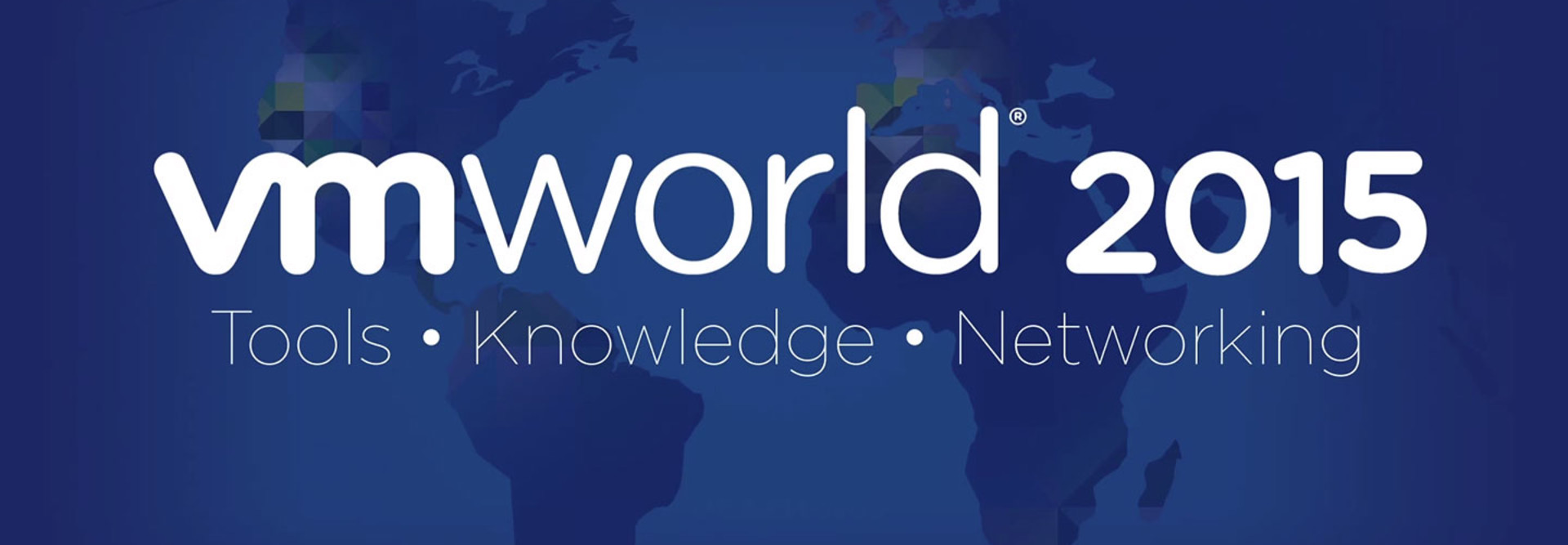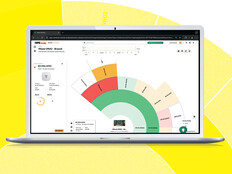6 Can’t-Miss VMworld Sessions
In today’s fluid business world, change waits for no one. IT organizations must adapt on the fly, fail fast and move forward at unprecedented speeds.
Cloud and mobility leader VMware says surviving in this era of disruption requires companies to be “Ready for Any” — the theme of this year’s VMworld 2015 conference, which runs Aug. 30–Sept. 3 in San Francisco.
At the event, VMware will share its digital readiness plan for companies on the path to becoming software-defined enterprises. Other highlights include a three-day DevOps Program featuring the latest industry technology and solutions. On Sept. 2, VMware will kick off the inaugural Developer Day at VMworld. In conjunction with the DevOps track, the all-day event will feature a live hackathon, guest speakers and technology sessions specifically designed for developers.
Choosing which sessions to attend at the 12th annual VMworld is no small task. With a full agenda offering more than 400 breakout sessions and labs, attendees can choose among tracks including cloud-native applications, software-defined data centers and end-user computing. We’re particularly excited about the following sessions:
1. Running Cloud-Native Apps on Your Existing Infrastructure
Applications built in the cloud give businesses the agility to react to organizational, market or product changes quickly. A cloud-native app offers a scalability advantage over custom apps because it’s built specifically for cloud platforms. But most organizations don’t have the luxury of scrapping every legacy application as they embrace the cloud.
In this session we will describe a platform to support both traditional and Cloud Native Applications, building a platform solution that can be integrated into existing IT infrastructures to deliver against both application architectures. By taking this approach it is possible to “future proof” your platform to deliver both traditional apps and the new mobile first Cloud Native Applications. Through practical experiences, various strategies will be explored on how to ensure your IT Infrastructure remains relevant in this fast paced changing world.
2. The Future of End-User Computing
End-user computing continues its magnificent transformation, no longer driven solely by the latest device or application, but by everything. End users want a seamless computing experience that integrates into their existing workflows and lifestyle — a tall order for IT vendors — but operating system advancements promise to deliver.
The end-user computing landscape continues to evolve with ever growing heterogeneity, new breakthroughs in application and device management and unprecedented security for users and data. Advancements in Operating Systems are helping to break the complex models of management in exchange for new unified end-point management that seamlessly spans desktops, laptops, tablets, phones and applications. Come learn what VMware is delivering in this new era of end-user computing to help you master heterogeneity while giving your users a consumer experience, all built on a trusted infrastructure.
3. From Architecture to Operations, Weaving Security into the Datacenter Fabric
Any discussion on cloud computing, virtualization and software-defined data centers should always include security. Security risks are increasing every day, and any software-enabled technology must adopt sophisticated, integrated security protocols to protect networks and data sufficiently.
Businesses are spending more on security today than ever before, and the number of security solutions available today is unprecedented. Despite both these facts, 2014 was dubbed the year of mega breaches! Why is that? Software Defined Datacenter and Cloud Computing have completely changed the definition of a datacenter. Perimeter security, which is quite effective for North/South traffic protection, has little to no meaning inside the datacenter where threats can move from server-to-server and exfiltrate critical and confidential information. Securing the modern datacenter requires security controls that are agile, automated and adaptable. Learn how to think beyond perimeter security and architect security at a more granular level.
4. Closing the Loop: Towards a World of Software-Defined Decision Making
There’s no shortage of sci-fi movies based on this premise: As soon as the machines start thinking for themselves, humanity is doomed. For the technology equivalents of Chicken Little, it’s time to start panicking because those days are already here.
We have already started down the path of software-defined decision-making. At small scale we can close the loop with software-defined decision-making in schedulers, in hypervisors, in operating systems, in Cloud platforms and meta-schedulers. In this talk we’ll explore just how far this might go: how this control loop ties together the worlds of Cloud, Mobile, Social and Big Data, and ultimately how software-defined decision making will impact the real world, at the intersection of technology, business, and life.
5. Accelerating Innovation with Microservices
For decades, hardware has continued to become increasingly smaller and more powerful. The phenomenon also is playing out within the services space. Microservices, a collection of tiny applications combined to offer larger services, offer the promise of faster time to deployment, thanks to less need for testing and development. Still, the concept is easier said than done.
How do you stay relevant when it seems that every other day, another Silicon Valley upstart attempts to disrupt your business? How do you keep up with its pace of innovation? This talk will focus on introducing Microservices, an architectural pattern that enables faster, incremental and more reliable pace of innovation that leverages the cloud as a platform for innovation rather than just a cost saving initiative. The talk will discuss essential elements of Microservices, the resulting flexibility and power, and the value of investing in a cloud-native platform that can help manage the additional complexity.
6. Managing IT Infrastructures by Data Analytics
In the digital age, if it’s not measurable, it’s not worth doing. IT managers not only need to power a secure, reliable and fast technology platform for their business, they also need to measure ROI and value to the broader organization.
The complexity and scale of IT infrastructures is increasing fast. As technology plays a larger differentiating role in products and services, the cost of outages and slow performance are also increasing. The only way that IT organizations are going to be able to handle the increasing scale, complexity, and quality demands is through the application of automated data analytics to IT data. This talk will cover VMware’s current advanced operational analytics capabilities and provide a glimpse of future analytical capabilities, all of which can be used to assess health, risk and efficiency across the IT environment.









